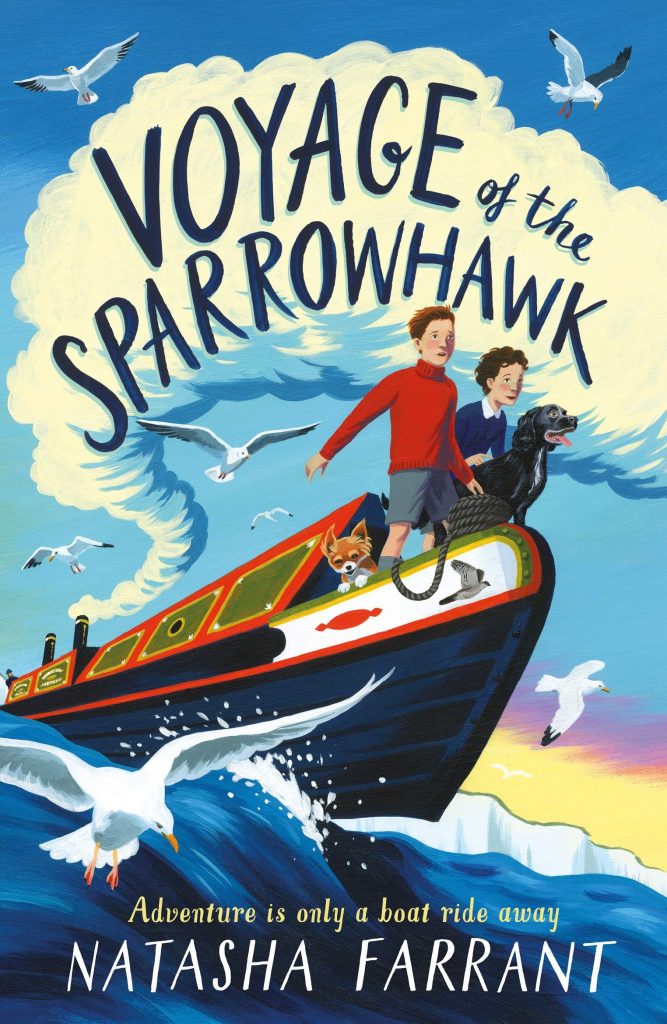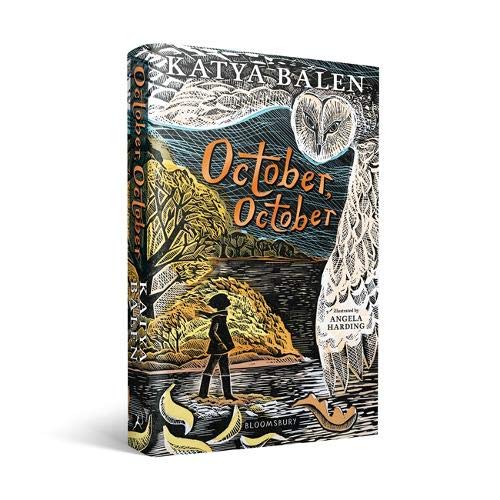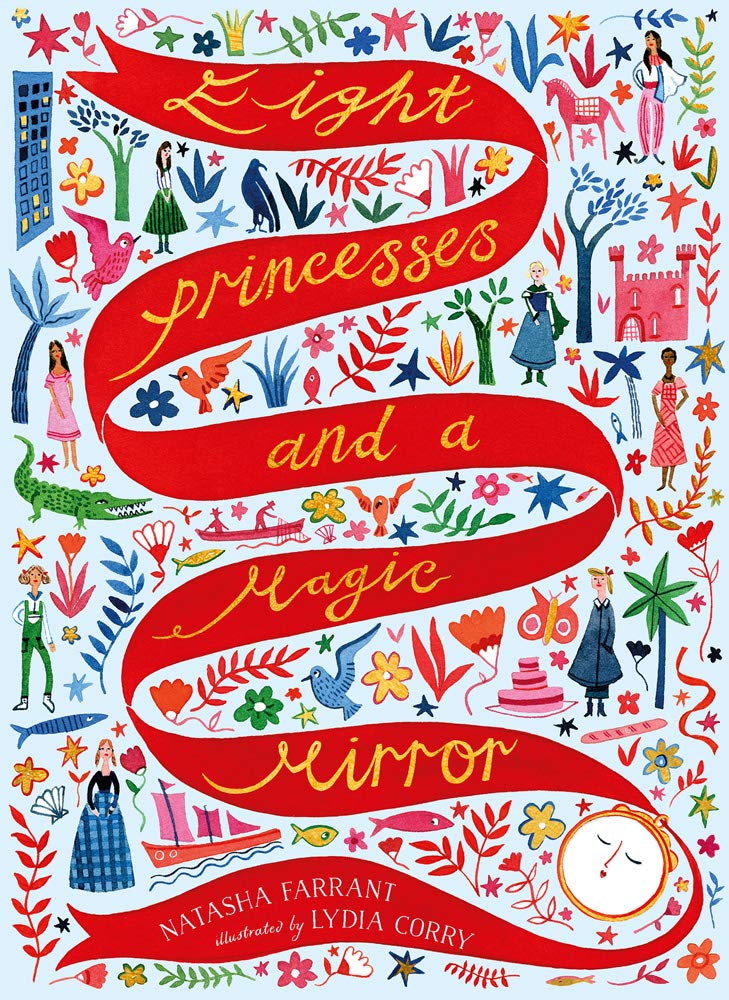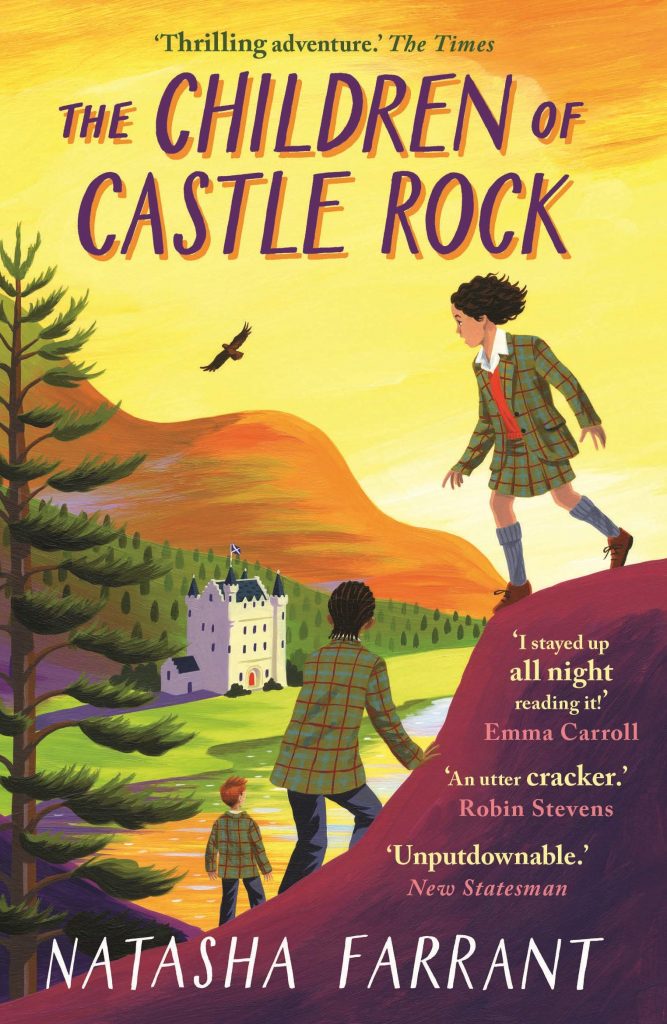Today, Natasha Farrant sails into The Reading Realm to talk to Stephanie Elliot about her book The Voyage of the Sparrowhawk!
Congratulations on being shortlisted for The Costa Coffee Book Award! How does it feel?
You know, there are so many wonderful children’s writers working in the UK at the moment – I sometimes feel we don’t appreciate just how many, or how wonderful. So mainly I feel really honoured to be on this shortlist, in the company of writers like Jenny Pearson, Darren Charlton and Meg Rosoff. But I also feel proud. I’ve sacrificed a lot to writing – this feels like a validation, and it’s lovely.
Can you tell us a little bit about the inspiration behind Voyage of the Sparrowhawk?
People don’t always believe me, but the first source of inspiration behind SPARROWHAWK was my friend Jane’s rescue chihuahua, Dobby… I was cuddling him as I pondered my next book, and I said as a sort of joke, “maybe I should just write about you”. And everyoneloved that idea because everyone loved Dobby. So then I started to play around, like I do with children in writing workshops. Who is the chihuahua in my book? Why does he need rescuing? Who rescues him? At the time I used to walk along the Regents’ Canal in London a lot, and I always stopped to look at the narrowboats and wonder where they had been, what their stories were. So then I put the chihuahua and the narrowboat together, and one thing led to another… It’s a nice example, I think, of how inspiration doesn’t have to come from big life events, but can be found in everyday things (not that Dobby – sadly no longer with us – was EVER an everyday chihuahua, OF COURSE. He was exceptional in every way, and now has a book dedicated to his memory!).
I really enjoyed another of your books called Eight Princesses and a Magic Mirror. Are there any similarities between that book and Voyage of Sparrowhawk?
I’ve never really thought of that… I mean, they’re really different. But I think what they have in common is that all of the main characters in both books – Lotti and Ben in SPARROWHAWK, and all the different princesses in EIGHT PRINCESSES – have a strong sense of agency over their lives. I’m interested more and more in children’s empowerment, particularly but not only around climate and environmental issues. We’re handing them such a messed-up world – I feel like the very least I can do as a children’s writer is offer them models of courage and resilience.
What kind of research did you do when writing this book?
The best bit of research was hiring a narrowboat for the weekend – so magical. So slow! So much harder to control than you might think… That was tremendous fun. Then there was a LOT of reading about the canal network, and the lives of boat people, and a lot of calculating how far and fast a boat could go each day. I had already visited the graveyards of World War I – haunting, haunting places – so I drew a lot on those memories, and I read a lot about the impact of the war on civilian life in both France and England. I also read a lot about puppy gestation…
Important to point out, perhaps, that though the research was all there, certain facts were… twisted. Like geography. And the likelihood of a narrowboat making it through a storm at sea. And the abovementioned puppy gestation…
Many of the reviews for Voyage of the Sparrowhawk have talked about how immersive and beautifully written it is and also that it’s ‘impossible to put down’. How did you ensure the book had a page turning quality to it?
Gosh, that’s a huge question! Well, there are lots of tricks, but I think the most important thing is to always know what is motivating your characters – every character, from the main protagonists downwards. Those “desire lines”, as character motivation is sometimes called, are the backbones of the story and what keeps the reader engaged. Essentially it’s about making clear all the time what the characters want, how they’re going to get it, what obstacles are going to get in their way and how they’re going to overcome them.
Do you have a favourite character in Voyage of the Sparrowhawk? Which of the characters was the most difficult to write?
My favourite character without a shadow of a doubt is Lotti. She’s so resilient and imaginative and brave, she makes me laugh and breaks my heart every time I read her. The hardest character to get right was her uncle Hubert. I think because he started life as a plot device as one of Lotti and Ben’s “obstacles” – which then needed to be fleshed out to be convincing.
Can you remember how you felt when you saw the stunning front cover for this book?
I loved the colours and the sense of drama, but I was a little taken aback because I hadn’t imagined my characters like that. But that’s almost always the case with illustrations! And David Dean is obviously a genius. I remember there was a note from him accompanying the first roughs saying “obviously the seagulls are all wrong” and I just looked at them and thought, how? How are the seagulls wrong, they’re perfect! But I did have to ask him to redo Elsie to make her look more like a spaniel…

Can you tell us anything about what’s next for you? Can we expect more from this gang?
No sequel, I’m afraid. Much as I love them, Lotti and Ben are exactly where they need to be, about to start their new lives, and the same is true of me! Now I’m working on a collection of stories about trees, and then I’m moving on to another adventure story.
What have you read recently that you could recommend?
I just finished reading OCTOBER, OCTOBER by Katya Balen, about a girl who has always lived off-grid in the woods who has to move to London, and it’s honestly one of the best books I’ve ever read. A little part of me has stayed in those pages.

Finally, can you describe Voyage of the Sparrowhawk in three words?
Exciting, joyful, adventurous!



